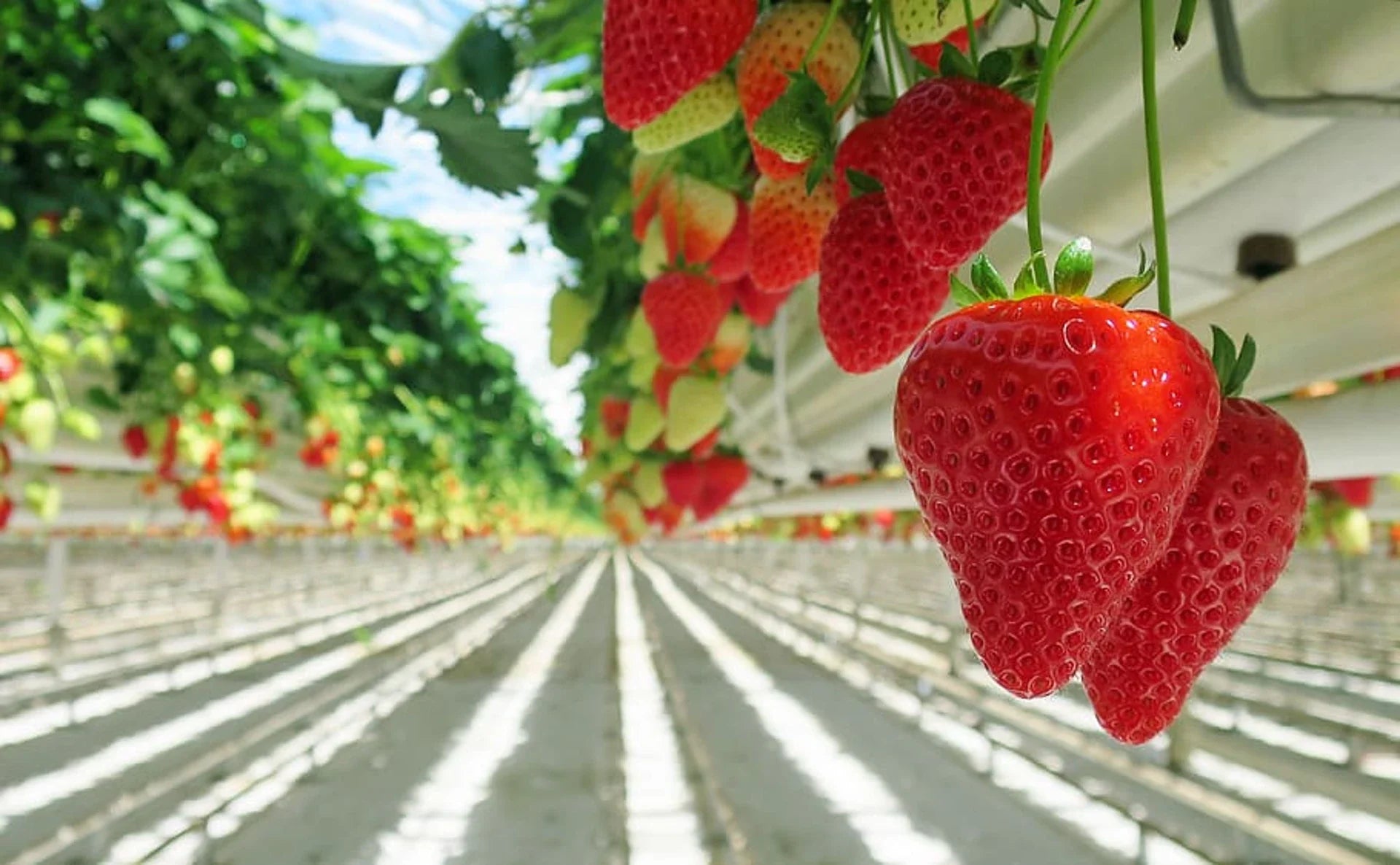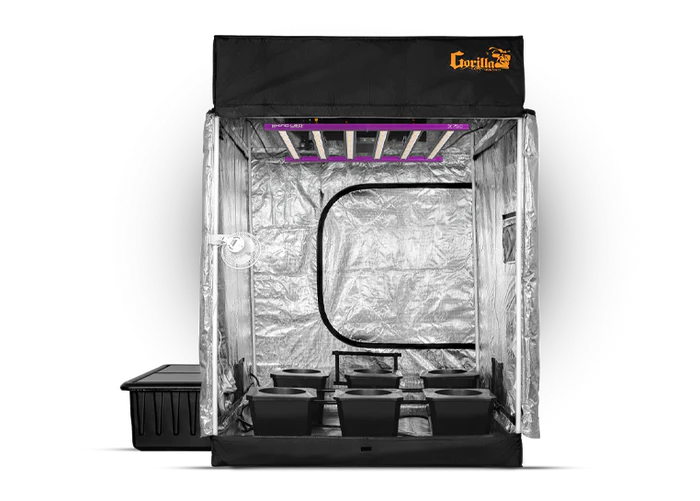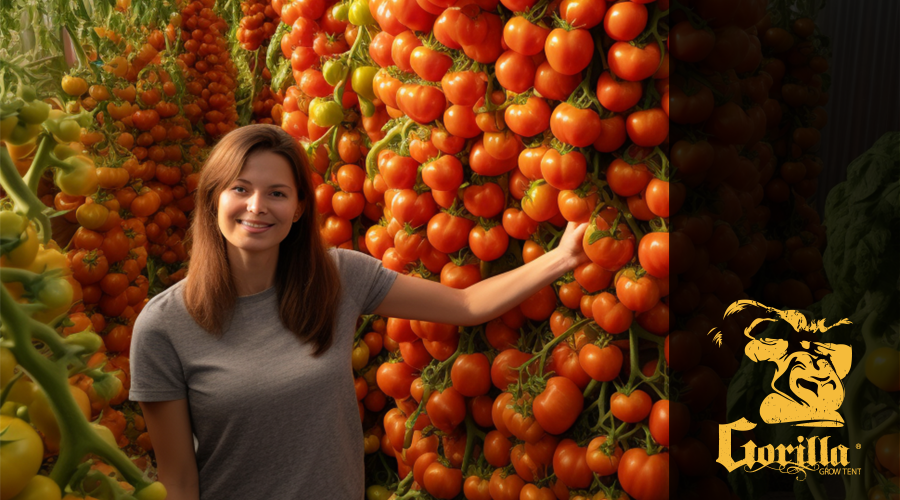
How to Grow Hydroponic Strawberries: Your Complete Guide to Year-Round Sweet Berries
Quick Answer: Hydroponic strawberries thrive in Deep Water Culture (DWC) or NFT systems with temperatures between 60-75°F, 12-14 hours of LED lighting daily, and pH levels of 5.5-6.5. Choose day-neutral varieties like Albion or Seascape for continuous production, and expect your first harvest in 60-90 days.
Imagine picking fresh, juicy strawberries from your indoor garden every month of the year. With hydroponic cultivation, this dream becomes reality. Hydroponic strawberries not only produce higher yields than traditional soil growing but also offer superior flavor, consistent quality, and complete control over growing conditions.
This comprehensive guide will walk you through everything needed to create a thriving hydroponic strawberry operation, from selecting the best varieties to optimizing harvest timing for maximum sweetness.
Why Choose Hydroponic Strawberries Over Soil Growing
Hydroponic strawberry cultivation offers significant advantages that make it the preferred choice for serious fruit growers seeking consistent, high-quality harvests.
Faster Growth and Higher Yields Hydroponic strawberries grow 30-50% faster than soil-grown plants because roots receive optimal nutrition without competing for nutrients. This direct feeding results in larger, more abundant fruits with harvest cycles starting just 60-90 days from transplant.
Year-Round Production Capability Unlike outdoor strawberry patches limited by seasons, hydroponic systems enable continuous production. Day-neutral strawberry varieties can produce fruit year-round under proper conditions, providing fresh berries even during winter months.
Superior Fruit Quality and Taste Controlled nutrition and environmental conditions produce strawberries with higher sugar content, better texture, and more intense flavor. Without soil-borne diseases and pests, fruits develop cleaner and more consistently.
Space Efficiency and Cleanliness Hydroponic systems require 90% less space than traditional strawberry fields while producing equivalent yields. The soilless environment eliminates dirt, reduces pest issues, and creates a cleaner growing space perfect for indoor cultivation.

Best Strawberry Varieties for Hydroponic Growing
Selecting the right strawberry variety is crucial for hydroponic success. Different varieties have specific requirements and production characteristics that affect your growing strategy.
Day-Neutral Varieties (Recommended) Day-neutral strawberries are ideal for hydroponic systems because they produce fruit continuously regardless of daylight hours:
- Albion: Large, sweet berries with excellent disease resistance
- Seascape: High yields with firm, flavorful fruits perfect for beginners
- San Andreas: Premium variety with exceptional taste and long harvest season
- Portola: Heat-tolerant variety producing large, attractive berries
Everbearing Varieties Everbearing strawberries produce two main crops annually with some fruit in between:
- Quinault: Large berries with good flavor, suitable for hydroponic systems
- Ozark Beauty: Hardy variety producing medium-sized, sweet berries
Avoid June-Bearing Varieties Traditional June-bearing strawberries produce one large crop annually and require specific cold dormancy periods, making them unsuitable for controlled hydroponic environments.
Optimal Hydroponic Systems for Strawberry Production
Different hydroponic systems offer unique advantages for strawberry cultivation. Choose based on your experience level, space constraints, and production goals.
Deep Water Culture (DWC) - Best for Beginners DWC systems excel for hydroponic strawberries due to simplicity and effectiveness. Gorilla's hydroponic bucket systems provide 25% more root space than standard containers, leading to significantly larger plants and higher yields.
The 6.6-gallon square design offers superior root health through oxygenated water and constant nutrient circulation. This prevents root clogging while ensuring consistent nutrient delivery directly to strawberry plants.
Nutrient Film Technique (NFT) NFT systems work excellently for strawberry production by providing continuous nutrient flow while maintaining proper root oxygenation. The thin nutrient film prevents root waterlogging while ensuring constant nutrition access.
Ebb and Flow Systems Ebb and flow systems flood and drain periodically, providing excellent root oxygenation between feeding cycles. This system works particularly well for larger strawberry production operations.
Media Bed Systems Growing strawberries in coconut coir or perlite provides root support while maintaining excellent drainage. This method combines hydroponic nutrition with traditional growing medium benefits.

Creating the Perfect Growing Environment
Environmental control is critical for hydroponic strawberry success. Strawberries have specific requirements that must be maintained consistently for optimal production.
Temperature Management Strawberries thrive in moderate temperatures:
- Daytime: 70-75°F (21-24°C) for optimal photosynthesis
- Nighttime: 60-65°F (15-18°C) to promote fruit development
- Root Zone: 65-70°F (18-21°C) for healthy root growth
Lighting Requirements Strawberries need substantial light for fruit production:
- Duration: 12-16 hours daily for continuous production
- Intensity: 300-400 PPFD for vegetative growth, 400-600 PPFD during fruiting
- Spectrum: Full-spectrum LED lights work best for all growth stages
Gorilla's Xi LED grow lights provide targeted full-spectrum technology specifically engineered for maximum yield and fruit quality. The advanced IR/UV control enhances strawberry sweetness and nutritional content.
Humidity and Air Circulation Proper humidity prevents fungal diseases while supporting healthy plant development:
- Vegetative Stage: 60-70% relative humidity
- Flowering/Fruiting: 50-60% relative humidity to prevent mold
- Air Movement: Gentle circulation prevents stagnant air and strengthens plant stems

Growing in Professional Grow Tents Gorilla grow tents provide the controlled environment strawberries need for optimal production. The 1680D canvas material maintains consistent temperature and humidity while the adjustable height accommodates growing plants.
The superior insulation and ventilation design create perfect microclimates for fruit production, while multiple port configurations allow precise environmental control integration.
Hydroponic Strawberry Nutrition and Feeding
Proper nutrition is essential for producing sweet, flavorful hydroponic strawberries. Understanding nutrient requirements throughout different growth stages maximizes both yield and fruit quality.
Essential Nutrients for Strawberries Strawberries require balanced nutrition with specific emphasis on:
- Nitrogen (N): 80-120 ppm for vegetative growth
- Phosphorus (P): 30-50 ppm for root development and flowering
- Potassium (K): 150-200 ppm for fruit development and sugar production
- Calcium (Ca): 150-200 ppm for cell wall strength and fruit quality
- Magnesium (Mg): 50-75 ppm for chlorophyll production
pH and EC Management Maintaining proper pH and electrical conductivity ensures nutrient uptake:
- pH Range: 5.5-6.5 (optimal at 6.0)
- EC Range: 1.2-1.8 mS/cm (lower for young plants, higher during fruiting)
- Monitor Daily: Use calibrated meters for accurate readings
Feeding Schedule and Adjustments Strawberry nutrition needs change throughout the growing cycle:
- Weeks 1-4: Lower EC (1.0-1.2) with higher nitrogen for establishment
- Weeks 5-8: Increase EC (1.4-1.6) and reduce nitrogen as flowering begins
- Weeks 9+: Maintain EC (1.6-1.8) with higher potassium for fruit development
Advanced Nutrient Strategies Professional growers enhance strawberry quality through targeted nutrition:
- Calcium supplementation during fruit development prevents quality issues
- Reduced nitrogen during fruiting concentrates energy into berry production
- Potassium boosts 2-3 weeks before harvest increase fruit sweetness
Step-by-Step Setup Guide for Hydroponic Strawberries
Setting up a successful hydroponic strawberry system requires careful planning and proper equipment integration. Follow this systematic approach for optimal results.
Phase 1: Equipment Assembly Start with complete hydroponic systems that include all necessary components:
- Set up your grow tent in a location with stable temperatures
- Install LED grow lights at proper distance from plants
- Connect hydroponic system with pumps, air stones, and timers
- Install environmental monitoring for temperature and humidity tracking
Phase 2: System Preparation
- Fill reservoir with filtered water and adjust pH to 6.0
- Add hydroponic nutrients according to manufacturer guidelines
- Test EC levels and adjust to 1.2 mS/cm for young plants
- Run system for 24 hours to ensure proper operation
Phase 3: Plant Introduction
- Start strawberry plants from runners or certified disease-free plants
- Gently wash soil from roots before placing in hydroponic system
- Support plants properly to prevent root damage
- Begin with 12-hour light cycles and gradually increase
Phase 4: Growth Management
- Monitor daily for nutrient uptake and plant development
- Adjust nutrient strength as plants mature
- Remove runners to focus energy on fruit production
- Provide plant support as berry clusters develop
Common Challenges and Solutions
Even experienced growers encounter challenges when growing hydroponic strawberries. Understanding common issues and their solutions prevents crop failures and optimizes production.
Poor Fruit Development Symptoms: Small berries, poor flavor, low yields Causes: Insufficient light, incorrect nutrition, temperature stress Solutions: Increase light intensity to 400-600 PPFD, adjust nutrient EC to 1.6-1.8, maintain optimal temperatures
Root Problems Symptoms: Brown roots, slow growth, plant wilting Causes: Poor oxygenation, incorrect pH, nutrient imbalances Solutions: Increase air pump capacity, maintain pH 5.5-6.5, check nutrient ratios
Flowering Issues Symptoms: No flowers, flower abortion, poor pollination Causes: Inadequate light, temperature extremes, humidity problems Solutions: Provide 12-16 hours quality lighting, maintain stable temperatures, hand-pollinate if necessary
Disease Prevention Symptoms: Leaf spots, mold, plant decline Causes: High humidity, poor air circulation, contaminated water Solutions: Reduce humidity to 50-60%, improve ventilation, use sterile practices
Harvesting and Maximizing Strawberry Production
Proper harvesting techniques and production optimization ensure continuous strawberry yields with maximum flavor and quality.
Harvest Timing
- Pick berries when fully red with slight give when gently squeezed
- Harvest every 2-3 days during peak production
- Morning harvesting provides best flavor and longest storage life
- Leave small white/green tip if planning immediate consumption
Extending Production Seasons
- Remove runners continuously to focus energy on fruit production
- Maintain consistent environmental conditions year-round
- Replace plants every 12-18 months for optimal production
- Stagger planting times for continuous harvest cycles
Yield Optimization Strategies Professional growers maximize strawberry production through:
- Plant spacing: 6-8 inches apart for optimal light penetration
- Nutrient cycling: Adjust feeding schedules based on fruiting cycles
- Environmental control: Use GXi ecosystem for automated optimization
- Selective breeding: Keep only the most productive plants for propagation
FAQ Section
How long does it take to grow hydroponic strawberries? From transplant to first harvest takes 60-90 days for day-neutral varieties. Once established, plants produce continuously for 12-18 months with proper care and nutrition.
What's the best hydroponic system for strawberry beginners? Deep Water Culture (DWC) systems are ideal for beginners due to their simplicity and effectiveness. The Gorilla hydroponic bucket system provides excellent results with minimal complexity.
How many strawberries can I expect per plant? A healthy hydroponic strawberry plant produces 1-2 pounds of berries annually under optimal conditions. Day-neutral varieties in controlled environments often exceed soil-grown yields by 200-300%.
Do hydroponic strawberries taste different than soil-grown? Hydroponic strawberries often taste sweeter and more intense than soil-grown berries due to controlled nutrition and optimal growing conditions. Proper nutrient management enhances natural strawberry flavors.
What temperature kills strawberry plants? Strawberry plants suffer damage below 28°F (-2°C) and above 90°F (32°C). Optimal production occurs between 60-75°F (15-24°C) with minimal temperature fluctuations.
How often should I change hydroponic nutrient solution? Replace nutrient solution every 1-2 weeks, or when EC drops below target levels. Monitor pH daily and adjust as needed to maintain optimal nutrient uptake.
Can I grow strawberries hydroponically without artificial lighting? Strawberries need 12-16 hours of light daily for optimal production. Natural lighting works in greenhouse settings, but LED grow lights ensure consistent production regardless of season or weather.
Summary
Key Takeaways: Hydroponic strawberries offer year-round production, higher yields, and superior fruit quality compared to traditional growing methods. Success requires proper variety selection, environmental control, and nutrient management with professional-grade equipment.
Transform your indoor growing with Gorilla's complete hydroponic systems designed for maximum strawberry production. From precision monitoring equipment to professional grow tents, every component works together for exceptional results.
Ready to start your hydroponic strawberry journey? Explore our complete growing systems and advanced LED lighting designed for serious fruit production.
Learn more about successful hydroponic cultivation with our guides on hydroponic system setup, growing fruit in grow tents, and optimizing hydroponic nutrition.

Lena Myles
I'm a mushroom enthusiast and home cook based in Oregon. I'm passionate about foraging and creating fungi-focused recipes, especially delicious, plant-based dishes using gourmet mushrooms like trumpet, shiitake, and oyster. When I’m not in the kitchen, you’ll usually find me wandering the woods in search of new wild flavors.


